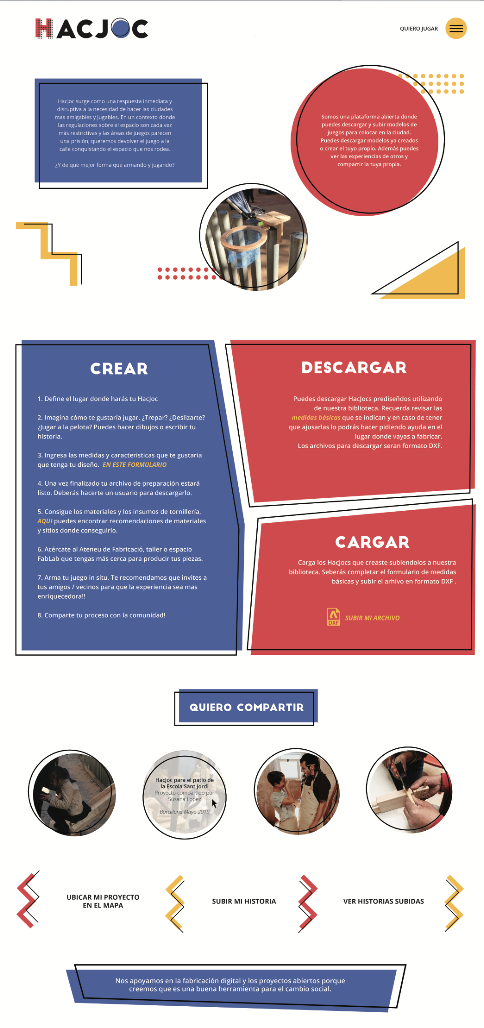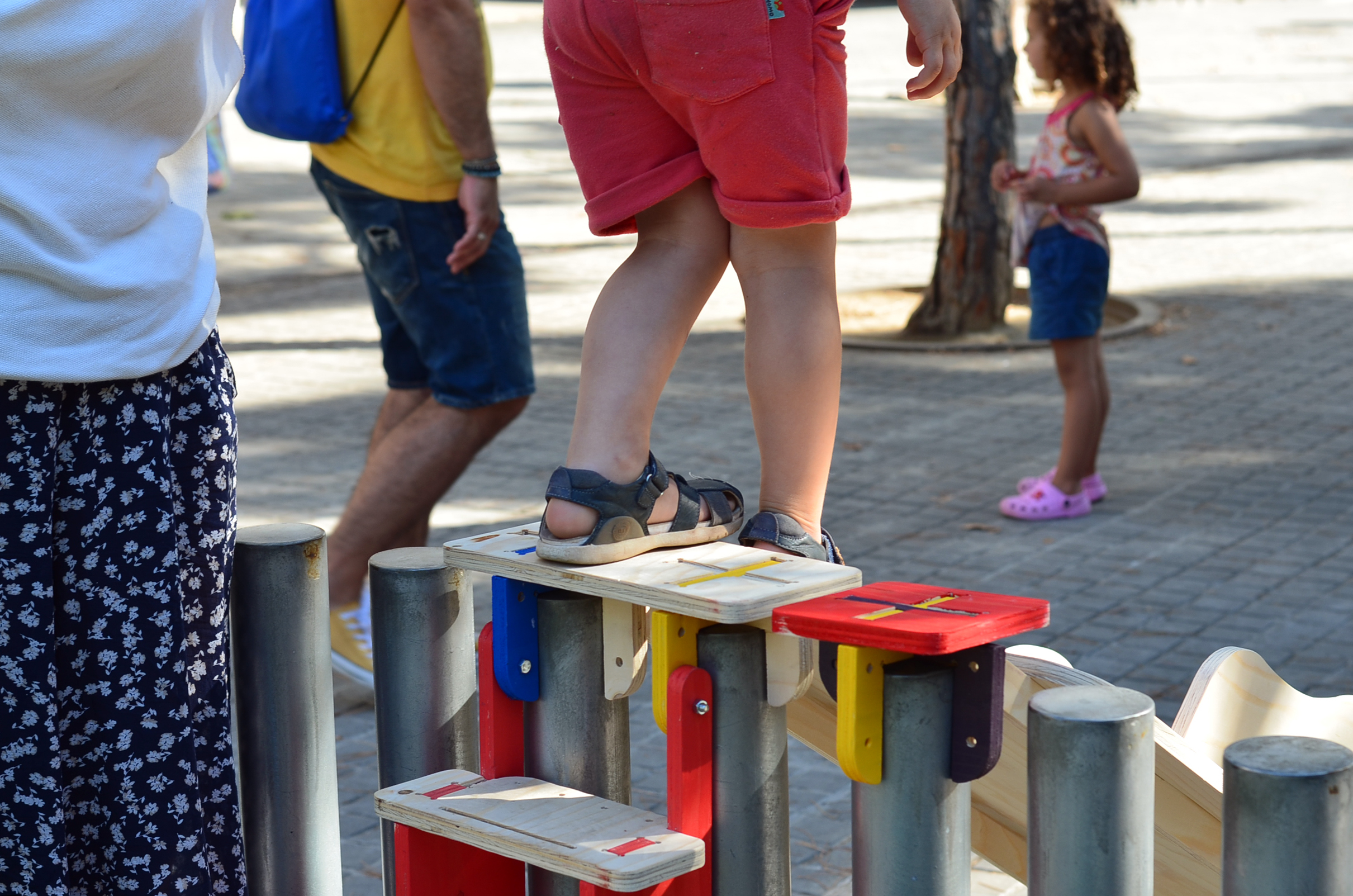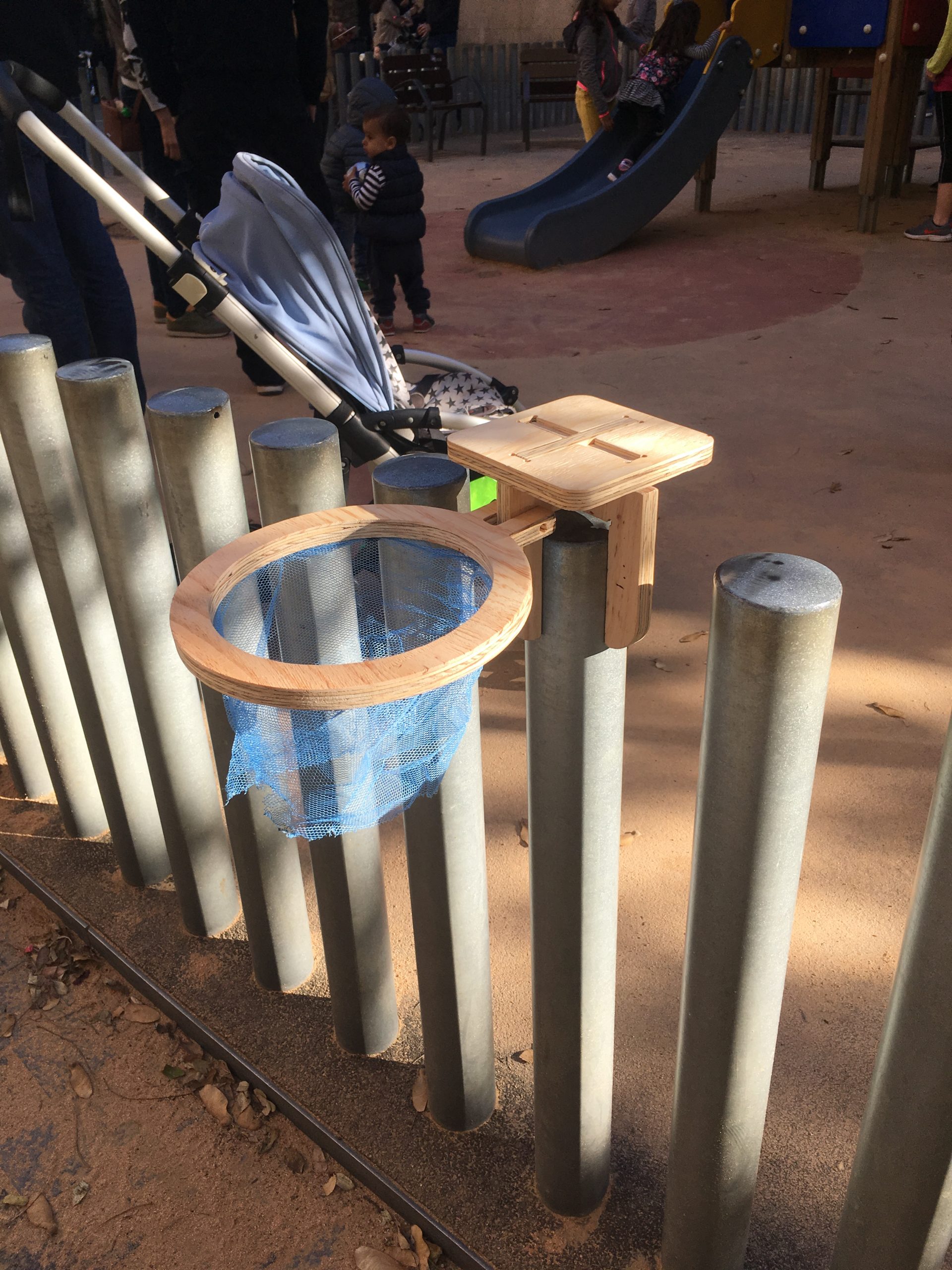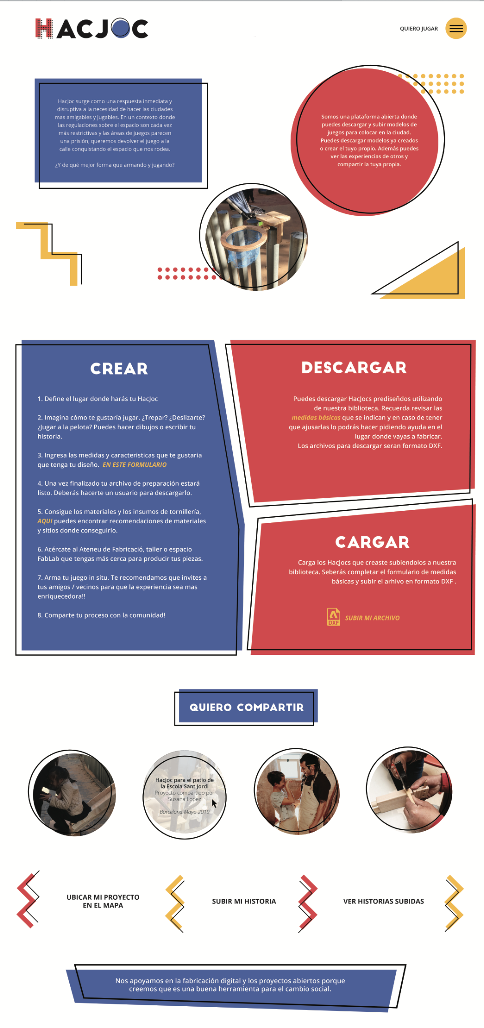HacJoc

Useful information
- Team members
- Florencia Talmon
- Country
- Spain
- Keywords
- playground urban space prototypes maker childhood.
Short Description
This project is an invitation to play hacking the limits, it is an invitation to create and question
Detailed Description
The aim of this project is to question the ways in which playgrounds are conceived in the contemporary city, specifically in Barcelona. It looks for new approaches to projects regarding childhood in the city, inviting children, families and neighbors to participate, imagine and create. The topic is analysed from a socio-political point of view resulting in a research and experimental design, which more than answering, seeks to ask questions. Thinking of the role of playing in the city and going deep on regulations, it challenges the limits and proposes new possibilities, shapes and dynamics.
The elements are divided in two, some of them are pre-designed and basic, the others open to new designs and creations. The seconds attach to the first ones, that need to be installed on the limit barriers found on every playground in Barcelona. The designs can be adapted to any situation and shape, as they are open source.
Project Details
- Does your design take social and cultural challenges and human wellbeing into consideration?
It questions the way we conceive childhood and the role of play in everyones lives. It promotes creativity and collaboration.
- Does your design support sustainable production, embodying circular or regenerative design practices?
It can be made by reused wood. It can actually include any reused piece available for play, as long as it respects the way pieces are attached.
- Does your design use principles of distribution and open source?
It's design is open source and can be downloaded modified (or not) and replicated by anyone. It is also designed to be produced, if needed, using Barcelona's pubic makerspaces.
- Does your design promote awareness of responsible design and consumption?
It does as it is questioning also the way we produce and manufacture elements made for play and children, ir questions how big companies monopolize the production of elements in the public space, leaving the user just as a consumer.
Images



Social Media Accounts

Useful information
- Team members
- Florencia Talmon
- Country
- Spain
- Keywords
- playground urban space prototypes maker childhood.
Short Description
This project is an invitation to play hacking the limits, it is an invitation to create and question
Detailed Description
The aim of this project is to question the ways in which playgrounds are conceived in the contemporary city, specifically in Barcelona. It looks for new approaches to projects regarding childhood in the city, inviting children, families and neighbors to participate, imagine and create. The topic is analysed from a socio-political point of view resulting in a research and experimental design, which more than answering, seeks to ask questions. Thinking of the role of playing in the city and going deep on regulations, it challenges the limits and proposes new possibilities, shapes and dynamics.
The elements are divided in two, some of them are pre-designed and basic, the others open to new designs and creations. The seconds attach to the first ones, that need to be installed on the limit barriers found on every playground in Barcelona. The designs can be adapted to any situation and shape, as they are open source.
Project Details
- Does your design take social and cultural challenges and human wellbeing into consideration?
It questions the way we conceive childhood and the role of play in everyones lives. It promotes creativity and collaboration.
- Does your design support sustainable production, embodying circular or regenerative design practices?
It can be made by reused wood. It can actually include any reused piece available for play, as long as it respects the way pieces are attached.
- Does your design use principles of distribution and open source?
It's design is open source and can be downloaded modified (or not) and replicated by anyone. It is also designed to be produced, if needed, using Barcelona's pubic makerspaces.
- Does your design promote awareness of responsible design and consumption?
It does as it is questioning also the way we produce and manufacture elements made for play and children, ir questions how big companies monopolize the production of elements in the public space, leaving the user just as a consumer.
Images


